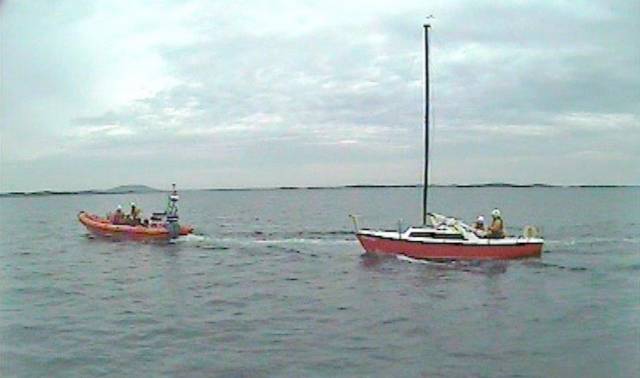#RNLI - Clifden RNLI prepared for launch at 7.16pm on Tuesday evening (20 June) to assist a yacht gone aground in the Clifden Bay area.
Helm David Barry, along with volunteer crew Ian Shanahan, Brian Ward and Owen Hayes on the Atlantic 85 inshore lifeboat, quickly located the 23ft yacht stranded on a rocky piece of shoreline.
The lone sailor on board was uninjured, and after communication with the lifeboat crew, it was agreed to tow the yacht from its location.
Clifden’s all-weather lifeboat and the Rescue 118 helicopter from Sligo were also requested to assist, but both were stood down when the yacht was successfully under tow.
Speaking following the callout, Barry said: “We returned the sailor and his yacht to a mooring in Clifden Bay and were glad to have been able to respond so quickly to a vessel in need of assistance.”
Meanwhile in West Cork, Union Hall RNLI were requested at 8.32pm to provide assistance to a 21ft yacht with two people on board, seven-and-a-half miles south of Adam Island at the entrance to Glandore Harbour.
The Union Hall inshore lifeboat Margaret Bench of Solihull launched within seven minutes and headed to the yacht, where sea conditions were calm but the yacht had encountered a squall, which resulted in the loss of a sail and instruments.
The lifeboat volunteers made contact with the two people on board, ensured there was no injuries, attached a tow line and towed the yacht back to the safety of Union Hall Pier.
Speaking after the callout, Union Hall RNLI lifeboat operations manager John Kelleher said: “The crew of the yacht made the right decision to contact the coastguard sooner rather than later.
“Always carry a means of communication, be it VHF or mobile phone. It is very important, especially at nighttime.”
































































